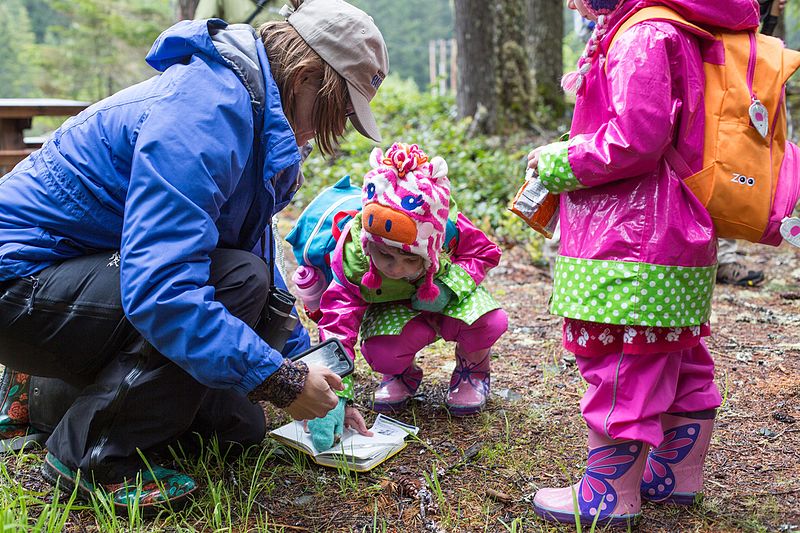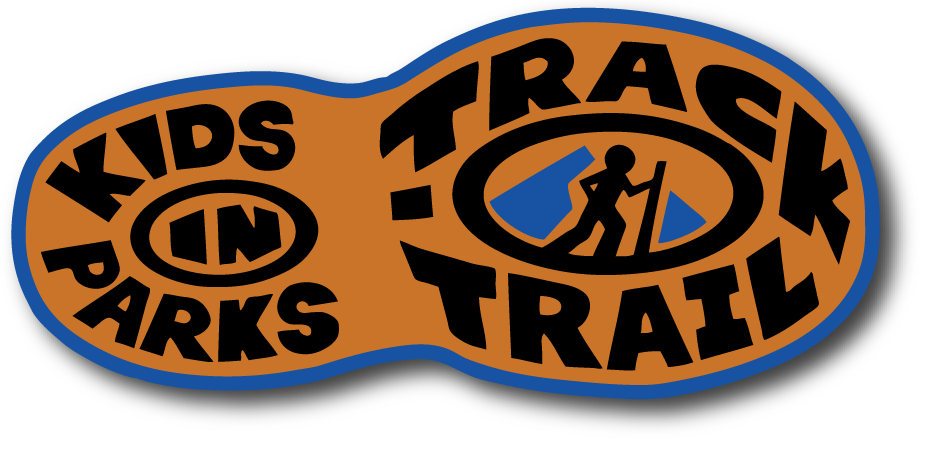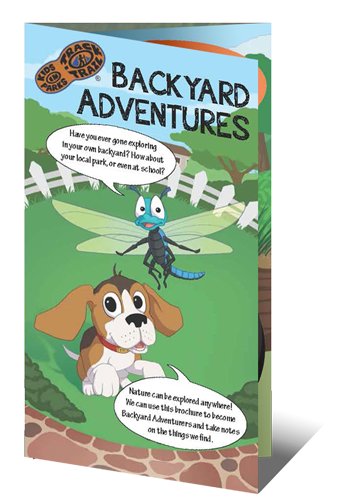Breadcrumb
- Adventure Stories
- Backyard BioBlitz
Backyard BioBlitz
In recent years, BioBlitzing has become an increasingly popular activity in urban areas. More and more, parks and cities host Bioblitzes to help create connections between the public and the environment. Attending a local BioBlitz can be a great opportunity for kids, enhancing their appreciation of the environment while engaging them in real citizen science projects. However, a BioBlitz event cannot be found everywhere. So, here are some tips on creating your own mini-BioBlitz in your backyard!
What is a BioBlitz?
Traditionally, a BioBlitz is a 24-hour event where scientists, naturalists, and volunteers focus on identifying and cataloging as many species as possible. This helps scientist get a picture of a specific area's biodiversity. Since the mid-90s, BioBlitzes have been a great way to encourage public interest and support of not only the environment but of local parks and public lands as well. Events like BioBlitzes help form stronger connections between people and the natural spaces in their urban communities. As such, most BioBlitz events are held in urban parks or nature reserves that are accessible from cities. However, these events can be held almost anywhere, including your own backyard! You'll be amazed at how many different plants, animals, insects, and more are living around you.

Kevin Bacher, National Park Service
How to conduct your own Backyard BioBlitz
Before you begin, take a day to gather your resources and decide where you'll be looking for living things. Perhaps you have a field near your home, or if you live in an apartment, you might look around your block. Even the smallest of spaces can be home to dozens of species.
-
Create a site map! Maps are useful in establishing the boundaries of your search area. You can also use them to plot where you find certain species. Creating a personalized map can also be a fun activity to do with kids ahead of the BioBlitz. Using an aerial imaging and mapping program, like Google Earth/Maps, capture an image of the area you'll be surveying. You can then print this out as is, or have kids recreate their own hand-drawn maps based on the aerial image. Older kids may benefit from drawing a grid on top of their map. The grid can be used as a way to mark coordinates to the locations where findings are made.
-
Know before you go! Sure, you might be familiar with your backyard or neighborhood, but are you familiar with what's in it? Of course, that's the whole point of the BioBlitz, right? However, a little pre-planning on how to identify poisonous plants or potentially dangerous animals can keep you from being surprised in not-so-fun ways. Knowing how to identify (and where you'll likely run into) things like poison ivy, poisonous mushrooms, and venomous insects or animals can keep you and your kids safe while you collect specimens.
Always express caution when observing things in nature, and never touch something you are unfamiliar with. Please leave any “scary critters” alone. They are just trying to live safely as well.
-
Gather your tools! In addition to a map, you will need items to collect and observe the species you find. Handling specimens can be optional, but getting a little dirty while collecting can be an exciting part of the BioBlitz experience! Some tools you might need will be:
-
A notebook for taking notes and recording findings
-
A smartphone with apps for identifying specimens (iNaturalist, Merlin Bird ID, PictureThis; details on the apps below)
-
Plastic bags and plastic containers with lids to collect specimens
-
Camera (optional), for photographing specimens. Phone cameras will work just fine
-
Magnifying glass
-
Butterfly net and/or aquatic net
-
Field guides for local or regional flora and fauna
-
Go outside! Once you've collected all your tools, it's time to begin identifying plants and animals! Since this is your own personal Bioblitz, feel free to conduct it however best works for you and your family. Maybe you only want to spend just the morning collecting specimens. Or maybe, if your family is large enough, you might divide into teams and compete to see who will make the most findings. Create goals for you and your family, and don't forget to take pictures of, or even draw, everything you find!
-
Discuss your findings! When you're finished with your collecting, gather everything you've found and catalog the species living in your backyard. You can use your map to mark where certain species were found. Think about all the living creatures making a home around you. Were you surprised by what you found? Consider how your everyday activities might affect these species. Do you think you would see different plants and animals during another season? One of the great things about a BioBlitz is that it can be a recurring event for your family, as you may collect new data and find new species each time.
Nature Identification Apps
 iNaturalist is one of the world's most popular nature apps, where you can get connected with a community of over 750,000 scientists and naturalists! By recording and sharing your observations through iNaturalist, you help create research-quality data for scientists working to better understand and protect nature. iNaturalist is also even better to use now, with new picture recognition software that helps you identify specimens simply by taking a photo with your phone. You can even create projects, or join larger local projects, and collect data for anything from your own backyard to the city.
iNaturalist is one of the world's most popular nature apps, where you can get connected with a community of over 750,000 scientists and naturalists! By recording and sharing your observations through iNaturalist, you help create research-quality data for scientists working to better understand and protect nature. iNaturalist is also even better to use now, with new picture recognition software that helps you identify specimens simply by taking a photo with your phone. You can even create projects, or join larger local projects, and collect data for anything from your own backyard to the city.For your Backyard BioBlitz, iNaturalist will be the perfect companion tool for collecting your findings.
Merlin Bird ID is a bird identification app from the Cornell Lab of Ornithology. The app allows you to download sets of birds by region. You then answer five simple questions about the bird you're observing and the app gives you possible matches based on your answers. You can also now snap a photo of a bird and upload it for identification. Results are based on 500 million observations made through Cornell's eBird citizen science project.
PictureThis is a quick and easy plant identification app, despite the somewhat vague name. You can identify thousands of plants in seconds by taking a picture through the app, which will compare your image to millions of others from users all over the world. PictureThis is also great for gardening, providing plant care tips and watering reminders. You can even identify mushrooms through the app!
Other Resources
-
Information from your state's Department of Natural Resources or Fish and Wildlife Department
-
Backyard BioBlitz Lesson Plan from the Illinois Department of Natural Resources
Citizen Science Projects
eButterfly is similar to eBird, but for butterflies!

